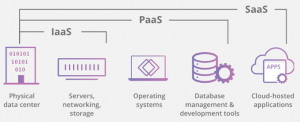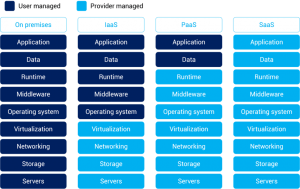|
Getting your Trinity Audio player ready...
|
PODCAST: Listen to Kareem Tawansi and Brett Raven discuss the dos and don’ts of choosing the right Cloud Provider
With so much legacy software still out there in the world of business, many companies are either still plannin g, or part way through transitioning, their systems to The Cloud. While the promise of simplicity through abstraction kicked many folks off on their journey to make that transition, the reality is there are still a lot of moving parts. In fact, in some ways, more moving parts than ever.
In this series of articles, I explore some of the dos and don’ts in such a journey.
The first cab off the rank is Choosing the Right Cloud provider:
Before discussing specific Cloud providers let’s first define what is meant be the term “the Cloud”. Put simply, the Cloud is a collection of services running on infrastructure in data centers distributed around the world.
The other thing we should think about is the difference between the types of services you may purchase from a Cloud Provider. For this, please see the diagrams below for a visual explanation.


Choosing the right Cloud Provider is not usually a simple process. There are a variety of things to consider. Each provider does things their own way and as such provides their own unique toolsets, APIs, etc. Therefore, when selecting a Cloud Provider, you will be committing to a certain system design which you need to feel comfortable with, both in terms of the toolset and the way the provider supports its customers, etc. So, there are many Cloud Service Providers out there but only a handful that have any significant market share.
Firstly, the wor ld’s largest Cloud provider is easily Amazon Web Services or AWS, with some 48% of the market. With data centers in every nook of our planet one of AWS’s strengths is “location, location, location”. Some other strengths include their multi-regional tenancies offerings and all that comes with that like simplicity of backup. AWS were one of the first to facilitate continuous deployment into production (a casing point is eBay who deploys up to 10 times in a day).
In terms of pricing, they offer a free tier as well as some pretty flexible pricing models for once you’re up and running in earnest.
The second biggest player in the market, with about 20% market share is Microsoft Azure. This is a great option if you are a Microsoft customer as their Cloud services integrate very nicely with their other products, such as M365, Dynamics, SharePoint, etc. Microsoft also make a big deal about privacy and security (but let’s not mention SolarWinds). While Azure is strong in both PaaS and SaaS, when using Windows servers they probably have an advantage in IaaS.
The next 3 (which makes up roughly 15% of the total market share) are Alibaba, great if you operate on the other side of the Great Chinese firewall; Google Cloud Platform (“GCP”), known for its research pedigree and probably providing the best built-in AI on the market and then there’s IBM, most famous for facilitating Watson, the most long-standing, fully commercialised AI toolset in the market.
So what factors to use when deciding? The things I would be thinking about include how portable do I want my system and what capabilities do I want baked into the services I buy; thus, do I choose IaaS, PaaS or SaaS. I would also take a close look at the feature set of each of the offerings, and specifically how they are used, and which one offers tools that fit in with my architectural plan.
Then, I would think about compliance to my region’s regulations and what accreditations are on offer. Then finally, price would be something worth considering . Each provider uses their own means of calculating their prices so there’s a bit of an artform involved to get them in a state to easily compare.



